Bulgogi is a classic Korean grilled beef recipe that makes a mouthwatering dinner or lunch. It‘s easy to make on a BBQ grill or stovetop griddle, too. Serve the tender pieces of marinated and caramelized meat alongside steamed rice and kimchi, or wrap the leftovers in your onigirazu.
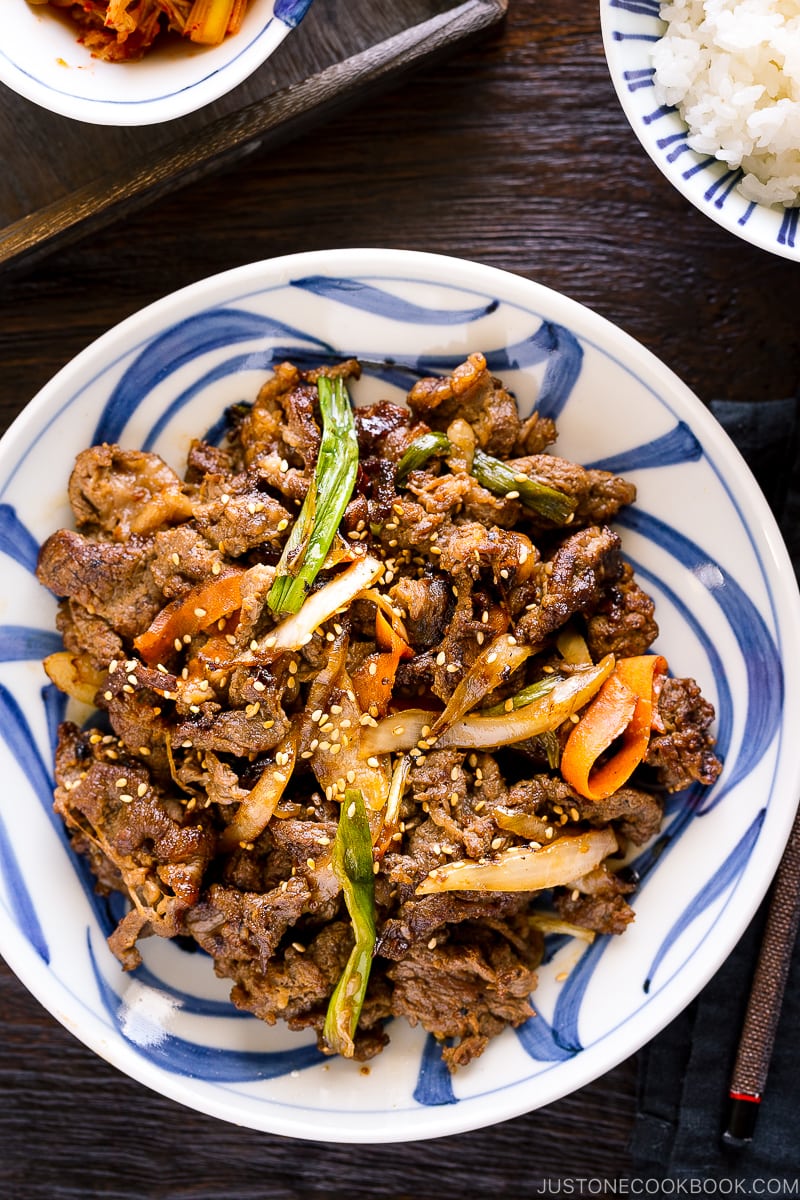
Grilling season is here and I want to share one of my family’s favorite grilled meat recipes: Bulgogi—the iconic Korean BBQ beef. Intensely flavorful and delicious, it is undoubtedly some of the tastiest dishes to put on the grill.
When the marinated meat hit the sizzling skillet, you can immediately smell the tantalizingly sweet & smoky aroma filling the hot summer air. Love your grilled meat with big bold flavors? You will have to give this Beef Bulgogi recipe a try!
Table of Contents
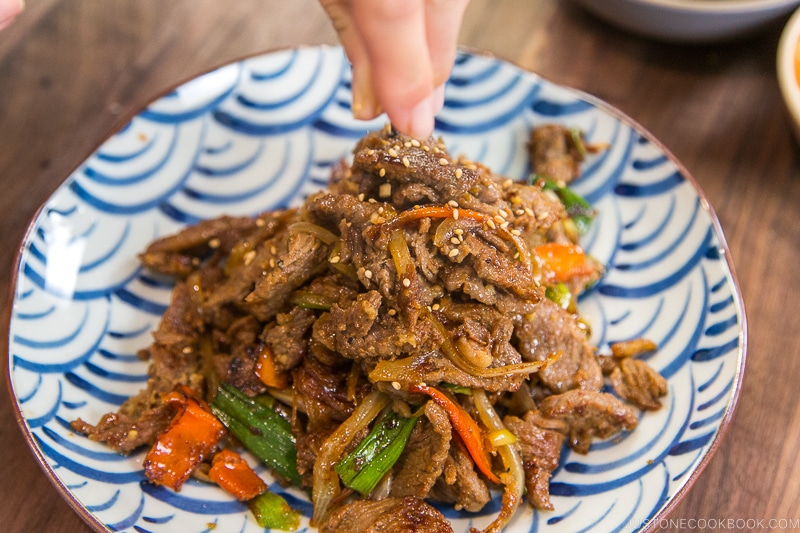
What is Bulgogi?
Bulgogi (불고기) is a classic Korean preparation of beef or pork in which thinly shaved meat is marinated in a sweet and savory sauce and grilled on a barbecue or on a stove-top griddle. Literally “fire” and “meat,” bulgogi has been in existence for nearly a thousand years. It was even considered a fashionably high-class cuisine during the Joseon Dynasty.
With Korean barbecue restaurants becoming the mainstay of Japan’s food scene in recent years, a lot of housewives started making bulgogi (プルコギ) at home.
I love that it makes a wholesome one-skillet dinner for the family, especially when you cook it with vegetables as I did in this recipe.
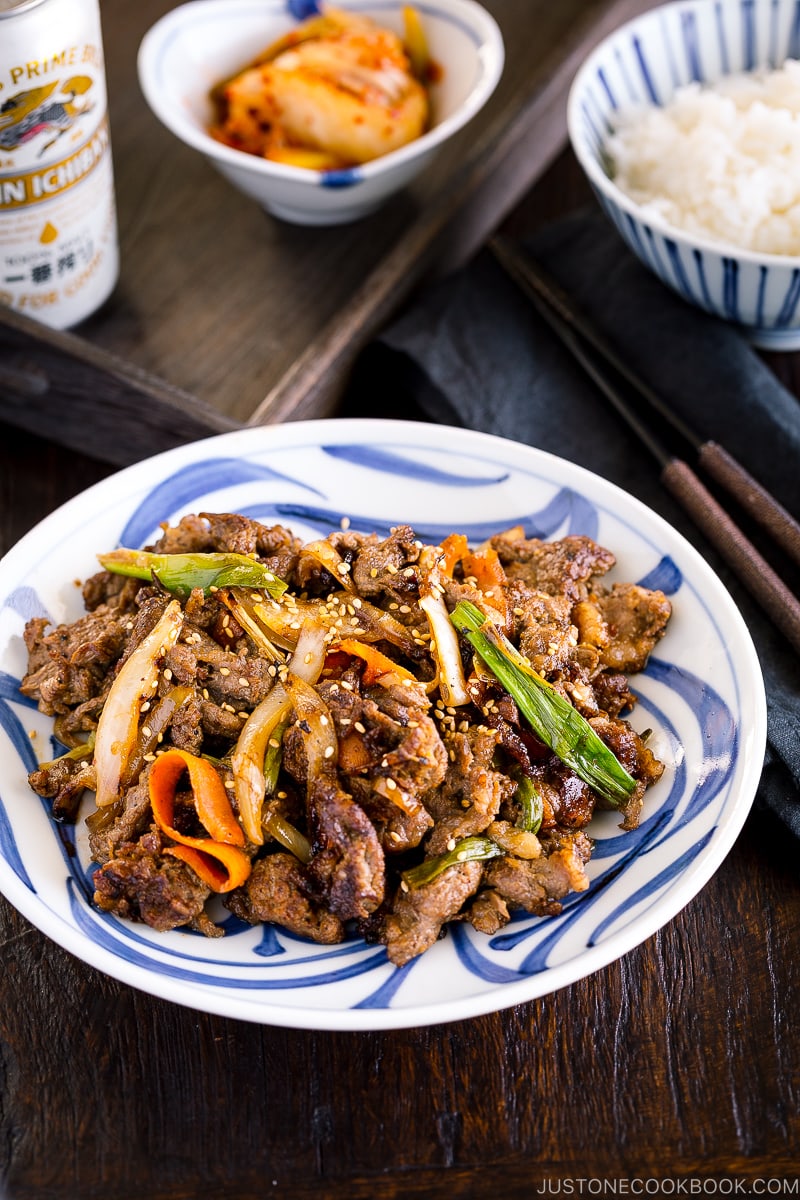
Ingredients for Korean Grilled Beef
- Vegetables: I used onion, green onions/ scallion, and thinly shaved carrot, but you can also use other veggies such as bell peppers, bok choy, spinach, or bean sprouts.
- Cut of Beef: Thinly sliced beef (chuck or rib eye) is best, but you can use tenderloin or top sirloin; If you can’t find thinly sliced beef, you can freeze the block of meat for 2 hours before slicing (See my tutorial).
- Marinade: Korean (or Japanese) soy sauce, roasted sesame oil, brown sugar, garlic, Korean (or Japanese) pear, and freshly ground black pepper.
- Sesame Oil
- Toasted sesame seeds
How to Make the Best Bulgogi
- Make the marinade and marinate the ingredients overnight.
- Grill the meat.
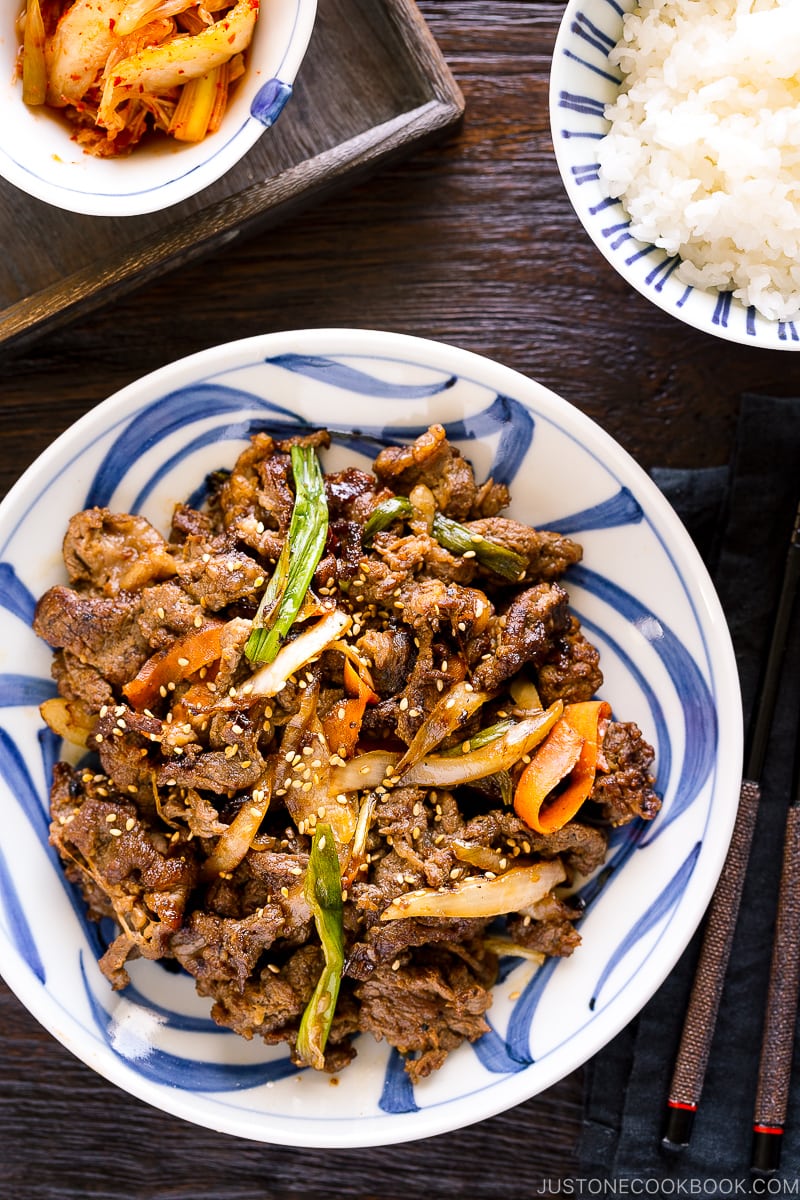
5 Tips to Make Delicious Bulgogi
Tip 1. Add grated Korean (Asian) pear
The SECRET ingredient for bulgogi’s tantalizing sweetness and melt-in-your-mouth texture is the addition of Korean pear in the marinade. Unlike other varieties, Korean pear (also called Asian pear or apple pear) contains more moisture and juice and has an enzyme that tenderizes the meat.
They appear in the grocery stores in the fall and winter months. It’s a lot easier to find them in Asian (Chinese, Korean, Japanese) grocery stores but my local Costco also carries them during the season. In Japan, we call these pears nashi (梨).
Korean pear may not be available in all seasons, but it’s totally worth hunting down when you make bulgogi at home. I didn’t expect I could get hold of a Korean pear in May at my local American grocery store. You never know until you look for it!
Tip 2. Use Korean soy sauce
Not all soy sauce is created equally! Korean soy sauce has a different richness, consistency, and flavor when compared to Japanese soy sauce or Chinese soy sauce. As it is one of the key flavors in bulgogi, you’ll notice a difference if you use another type of soy sauce.

Ideally, if you wish to cook up flavorsome bulgogi and other Korean dishes, use only Korean soy sauce as it works best for the characteristics of the cuisine. On the other hand, I use only Japanese soy sauce for all my Japanese cooking.
Tip 3. Marinate for at least 30 minutes (or overnight)
In my recipe below, I recommended at least 30 minutes for marinating, but I highly recommend overnight so the beef will be more tender and have enough time to soak up all the flavors. But sometimes, we just have that time. In that case, start prepping the meat the first thing so you can marinate for a long time.
Tip 4. Do not add the marinade liquid to the hot skillet
The trick in giving a nice char to the beef is to use a pair of tongs to pick up the meat from the marinade, leaving the liquid behind. You need to place just the meat on the hot skillet, no liquid goes into the skillet. Otherwise, you would end up steaming the meat in the pan. Make sure you coat each piece of the sliced beef well with your hands covered with plastic and let them absorb the flavors while marinating.
Tip 5. Cook on a hot skillet
Whether you use an outdoor barbecue grill or cook over the stovetop, you want to make sure the skillet/ pan is hot. That’s when the sliced meat gets nicely charred and caramelized quickly.
If using an outdoor barbecue grill, make sure to cook the meat on a skillet so the small pieces of meat won’t fall between the grill grates. I like to use a cast-iron skillet.
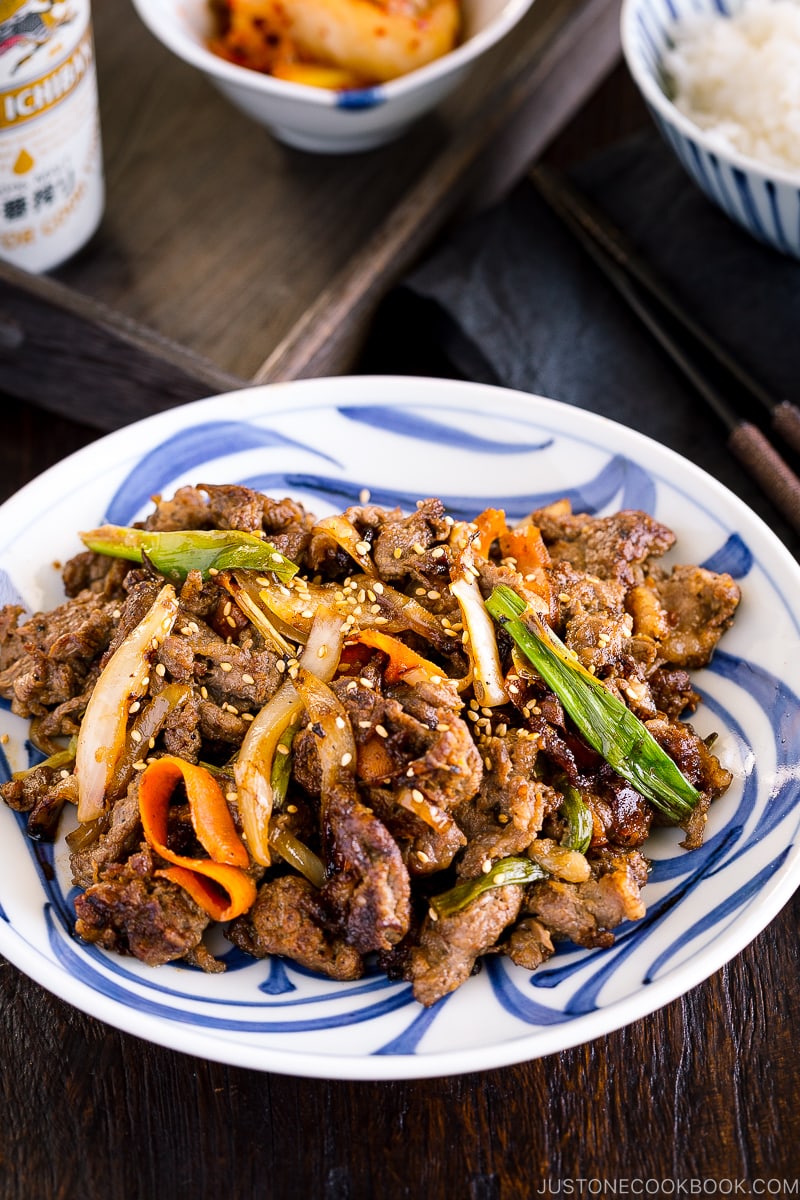
Bulgogi for An Easy Weeknight Family Meal
In the summertime, I often serve Bulgogi with steamed rice and kimchi on the side for a quick and easy weeknight family meal. If you are hosting a BBQ, this Korean grilled meat also makes a fabulous finger food when served on lettuce wraps. Enjoy with some icy cold beer or lemonade.
Oh, don’t forget to save a portion of leftover bulgogi meats for Bulgogi Onigirazu the next day! The rice sandwich is a delicious meal on its own.
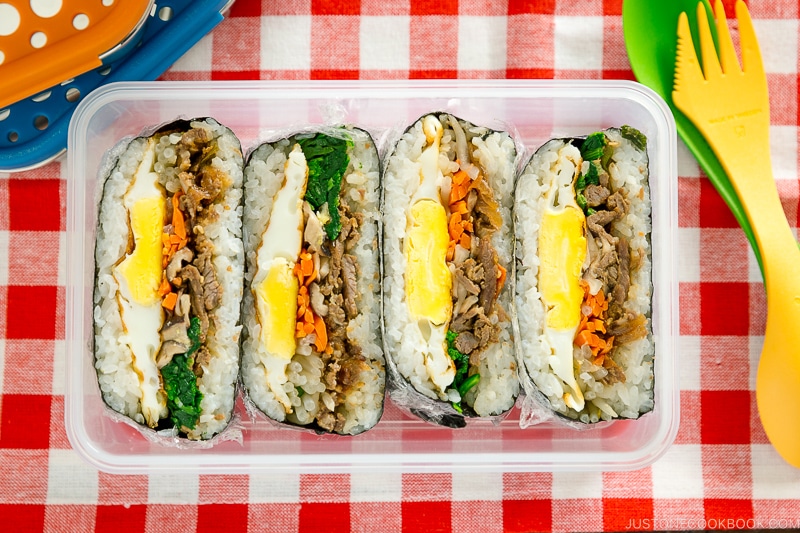
Side Dishes to Serve with Bulgogi
For a more elaborate meal, here are some amazing side dishes that pair well with this Korean Beef Bulgogi:
- Quick Korean Fresh Kimchi
- Korean Spinach Namul and Bean Sprout Namul
- Onigiri Rice Balls
- Spicy Pickled Cucumbers
- Spicy Bean Sprout Salad
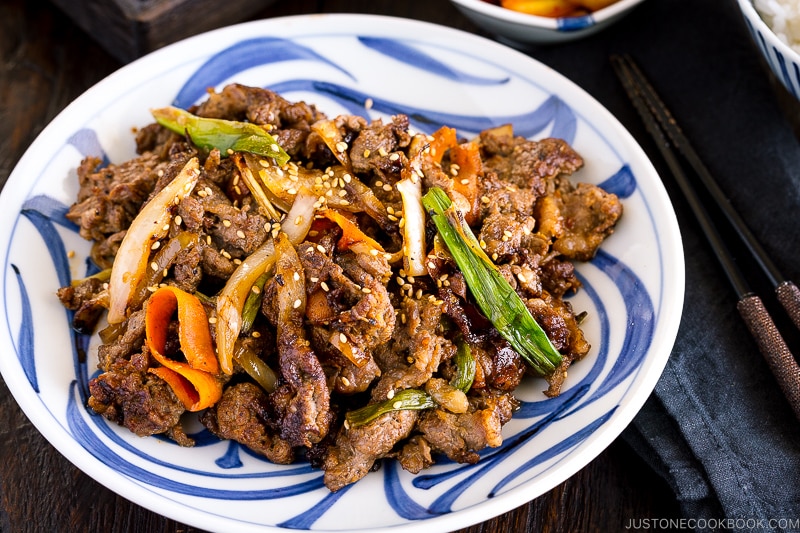
Wish to learn more about Japanese cooking? Sign up for our free newsletter to receive cooking tips & recipe updates! And stay in touch with me on Facebook, Pinterest, YouTube, and Instagram.
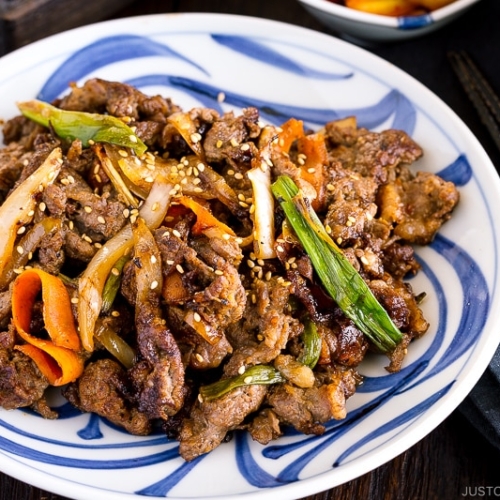
Bulgogi (Korean Grilled Beef)
Video
Ingredients
- ½ onion
- 3 green onions/scallions
- 4 inches carrot
- 1½ lb thinly sliced beef (chuck or ribeye) (or use tenderloin or top sirloin; if you can’t find thinly sliced beef, see how to thinly slice meat at home)
- 1 Tbsp toasted sesame oil
- ½ Tbsp toasted white sesame seeds (for the garnish)
Bulgogi Marinade
- 4 Tbsp Korean soy sauce
- 2 Tbsp toasted sesame oil
- 3 Tbsp brown sugar (don’t substitute with honey as it burns easily)
- 8 cloves garlic (4 tsp, minced)
- ½ Asian pear (4 Tbsp, grated; or substitute with Fuji apple, kiwi, or fresh (not canned) pineapple)
- freshly ground black pepper
Instructions
- Gather all the ingredients.

- Make the bulgogi marinade. To a large bowl, add 4 Tbsp Korean soy sauce, 2 Tbsp toasted sesame oil, 3 Tbsp brown sugar, and 8 cloves garlic (crushed or minced).

- Grate ½ Asian pear into the bowl.

- Add freshly ground black pepper and mix it all together.

- Cut ½ onion into thin slices. Cut 3 green onions/scallions into 2-inch (5-cm) pieces and then cut in half lengthwise.

- Using a peeler, peel 4 inches carrot into thin ribbons or strips (or slice thinly). Add the onion, green onions, and carrot to the marinade, and mix all together.

- Add 1½ lb thinly sliced beef (chuck or ribeye) to the marinade, separating each slice. Mix it all together to coat with the marinade. I wear plastic gloves and mix thoroughly by hand.

- Set aside to marinate for at least 30 minutes or overnight (recommended).

To Cook
- Heat a large skillet (I use a cast iron grill pan here) over medium-high eat. When it‘s hot, add 1 Tbsp toasted sesame oil.

- Add the marinated beef in a single layer. Grill until cooked through, about 5 minutes. Transfer the meat to a plate and sprinkle with ½ Tbsp toasted white sesame seeds.

To Serve
- If you have a single-serving cast iron plate, you can use it to keep the meat warm for a longer time. Enjoy!

To Store
- You can keep the leftovers in an airtight container and store in the refrigerator for 3 days. You can also freeze it for up to a month.
Nutrition
Editor’s Note: This post was originally published on June 26, 2017. The post has been updated in August 2022.
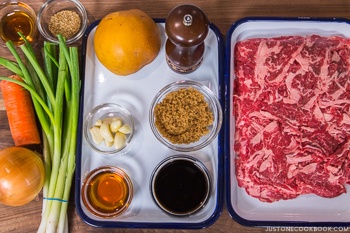

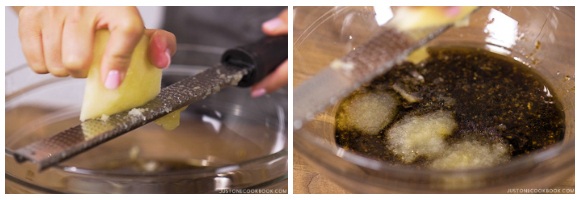
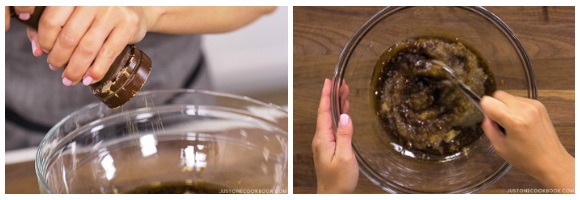
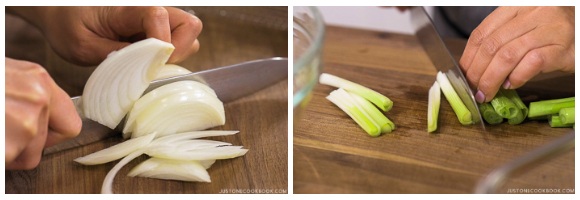
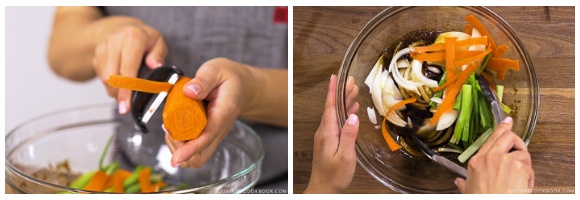
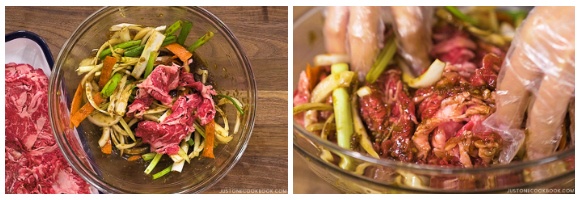
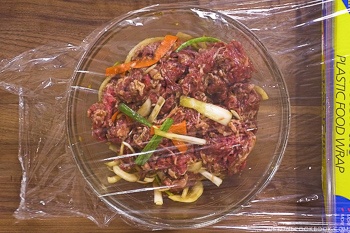

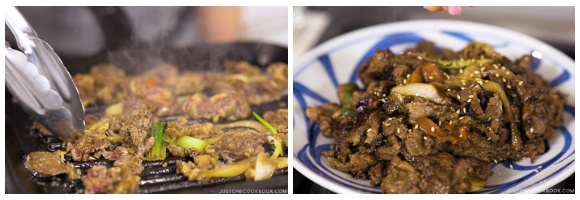
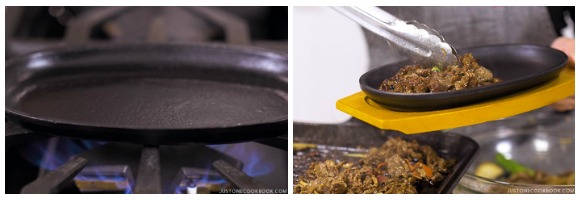











great recipe
Hi Paris! Thank you for reading Nami’s post and trying her recipe!
We are glad you enjoyed this recipe.
Happy Cooking!
[…] use the Sempio brand for my Japchae and Bulgogi Korean Grilled Beef recipes. You can purchase it on Amazon or find it at Korean or Asian grocery […]
Word of caution using pineapple. Rating a five because I have used the recipe several times using either Asian pear or other pear when I couldn’t find an Asian pear. Today, running to the store for a pear wasn’t an option being in a small town and the Fourth of July in the states. I had fresh pineapple so decided to substitute. I marinated for the usual time and the meat was mush. It was late, my kids were hungry so we ate it anyway stirred into the rice with gochujang and topped with kimchi and pickled cucumber. I searched far and wide and found that with thin slices of meat no longer than 10-15 minutes!! Oops! Tomorrow I will use the leftover mixed with gochujang and stuff it into sticky rice
Hi Jennifer! Thank you very much for sharing your cooking experience with us.
We are sorry to hear that the meat didn’t turn out well.
The pineapple contains the bromelain enzyme, and it makes meat mushy. So it works well for quick marinade but not for more than 10 minutes.
Thank you for rating a five, we hope you give this recipe a try again! 🙂
I’m marinating my beef using this recipe as we speak, very excited to try it! (I’ll update my review when I do so I can rate it!). I’m a little nervous though, I didn’t realize the Korean soy sauce I grabbed was labeled ‘soup soy sauce’ which I guess is saltier than regular soy sauce…. Hoping my beef doesn’t come out overly salty >_>;
Hi Giggs! Thank you very much for trying Nami’s recipe and sharing your cooking experience with us!
We hope you were able to manage the saltiness and enjoyed the dish.🙂
Update! Sorry I meant to do this sooner, lol, my memory is so poor.
The recipe turned out great despite using the soup soy sauce – it wasn’t overly salty at all actually! I love how tender the beef stayed too even when I overcooked it a little. I imagine the pear and the onions helped with keeping the meat tender 🙂 Great recipe, very tasty!! I hope to get to my local Asian market this week to grab some actual shaved beef to try this with, I ended up having to just thinly cut some chuck myself. Never can get it thin enough though, lol.
Hi Giggs! Awesome!!! We are so happy to hear you enjoyed the Bulgogi!
Thank you very much for your update and your kind feedback!🥰